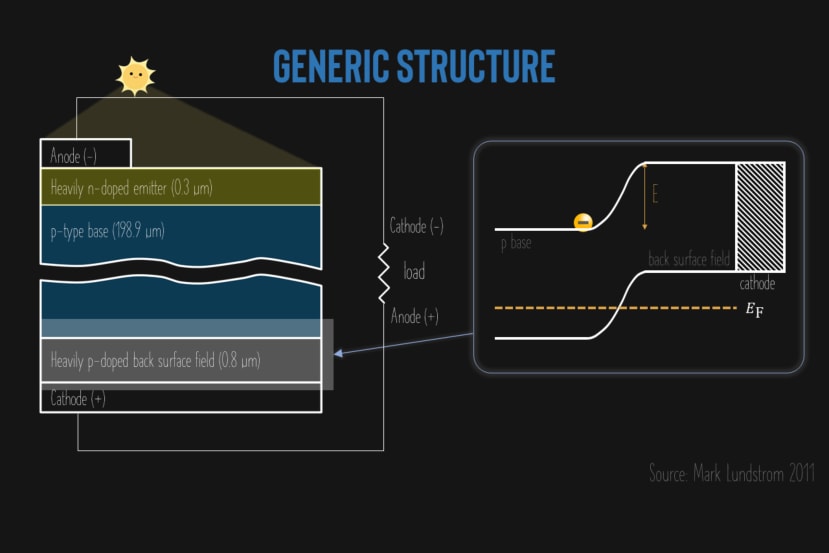Shining Light on Solar Cells - Chapter 5.1: How do Solar Cells Work? (Typical Structure, Shockley-Queisser Limit)
Follow articleHow do you feel about this article? Help us to provide better content for you.
Thank you! Your feedback has been received.
There was a problem submitting your feedback, please try again later.
What do you think of this article?
By now, we have understood the basic working principle of a solar cell and how its IV curve looks like. In the second part of this chapter, let us understand the generic structure and design of a typical solar cell, and answer some common questions students usually ask.
Next, we will also learn about the Shockley-Queisser Limit, discovered by William Shockley and Hans Queisser. This finding was published in 1961 and has been cited more than 12000 times, setting the scene for the entire photovoltaics research industry. This describes a theoretical efficiency limit of solar cells due to the trade-off between current and voltage.
References
Shockley, William, and Hans J. Queisser. "Detailed balance limit of efficiency of p‐n junction solar cells." Journal of applied physics 32.3 (1961): 510-519. https://doi.org/10.1063/1.1736034
Further reference materials that I highly recommend:
Solar Cells Lecture 1: Introduction to Photovoltaics
ECE Purdue Primer on Semiconductor Fundamentals
Other parts in this series:
- Chapter 1: Introduction
- Chapter 2.0: Semiconductor Physics (Band Diagram, Free Carriers)
- Chapter 3.0: PN Junction diode (Drift and Diffusion)
- Chapter 3.1: PN Junction diode (Forward & Reverse Bias, IV Curve)
- Chapter 4: Photons
- Chapter 5.0: How do Solar Cells Work? (Working Principle, IV Curve, Photovoltaic Parameters, Solar Cell Datasheet)



Comments